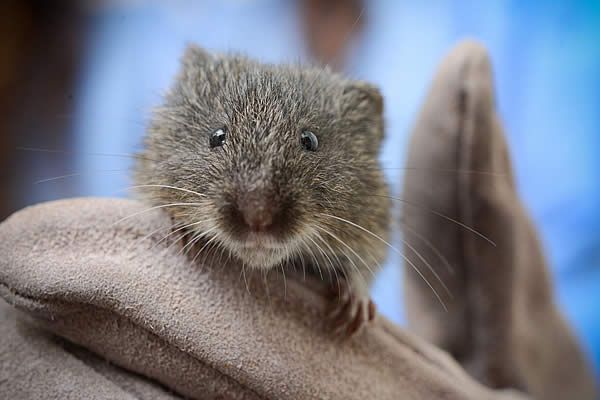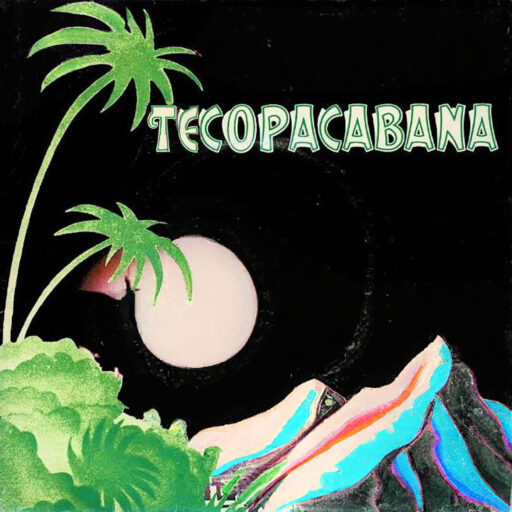
Welcome to our new science section — a weekly dive into the research shaping our understanding of the Amargosa Basin and the desert communities that call it home. Every Friday we will post a relevant article distilling peer-reviewed studies, field reports, and academic findings into clear, locally relevant stories about Tecopa’s ecology, geology, climate, and history. From endangered species and water chemistry to archaeology and rural planning, we’ll explore what scientists are discovering in this extraordinary corner of the Mojave — and why it matters for the people who live here today.
In the quiet marshes surrounding Tecopa Hot Springs, a small and unseen drama is unfolding beneath the reeds. House mice, newcomers to this fragile desert ecosystem, have been found carrying parasitic worms that could spill over into one of California’s rarest mammals — the endangered Amargosa vole.
A 2024 UC Davis study by ecologist Mia L. Reed has identified the first known cases of these parasites in the Amargosa Basin. Conducted between 2021 and 2023, Reed’s research examined gastrointestinal worms in local rodents, revealing that nearly one in five house mice carried a stomach nematode from the genus Protospirura. One wild vole, caught in the same Tecopa habitat, was infected with a different worm, Strongyloides sp.
A Tale of Two Marshes
Reed’s fieldwork stretched across six marshes north and south of Tecopa Hot Springs Road — the same lush ribbons of bulrush and saltgrass that sustain the last wild vole populations. Her data showed a striking divide: no infections north of town, but a 27 percent infection rate in the southern marshes.
Body mass, sex, and condition offered little statistical insight, though mice with poorer body condition were somewhat more likely to be infected. Under the microscope, the worms displayed the hallmarks of Protospirura — tri-lobed mouthparts and egg-filled stomachs — closely related to P. canariensis and P. muricola, species known from other rodents worldwide.
The Endangered Neighbor
The Amargosa vole (Microtus californicus scirpensis) clings to survival in a handful of marshes near Tecopa, isolated by desert and hemmed in by human settlement. Generations of inbreeding have left the population with low genetic diversity and weakened immune defenses. That fragility, coupled with a poor diet of bulrush stems, makes the vole especially susceptible to parasites that sap nutrition and stamina.
Reed’s study also detected Strongyloides DNA in the single vole examined — a first for the species. The genetic signature resembled S. stercoralis, a parasite known to infect humans, hinting at possible overlap between wildlife and human health in this shared wetland landscape.
Why It Matters in Tecopa
For conservationists, these findings mark a subtle but significant turning point. The Tecopa marshes are central to the federal and state recovery effort for the Amargosa vole — a species whose entire fate rests within a few square kilometers of habitat. The arrival of house mice, a global generalist, introduces new ecological pressures: competition for food, potential disease transmission, and now, confirmed parasitic worms.
Reed concludes that the mice may act as “amplifying hosts”, maintaining parasites in the environment that could eventually infect voles. Identifying the insect species that serve as intermediate hosts for these worms will be key to understanding how — and whether — the parasites can cross between species.
Next Steps for the Basin
The study calls for broader sampling across Tecopa’s marshes, especially south of town, to gauge how widespread the infections have become. It also underscores the importance of monitoring arthropod populations that could serve as vectors.
Funded by the California Department of Fish and Wildlife, the Bureau of Land Management, and the U.S. Fish and Wildlife Service, Reed’s research adds an invisible layer to Tecopa’s conservation story — one that connects tiny stomach worms to the survival of a species found nowhere else on Earth.
Source: Reed, Mia L. (2024). If You Can Stomach It: A Study of Gastrointestinal Helminths of House Mice (Mus musculus) and the Risk of Spillover to Endangered Amargosa Voles (Microtus californicus scirpensis). University of California, Davis.

Leave a Reply